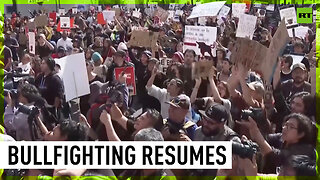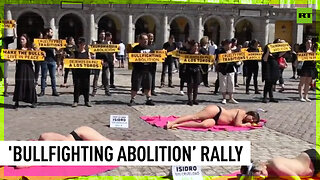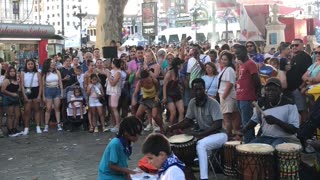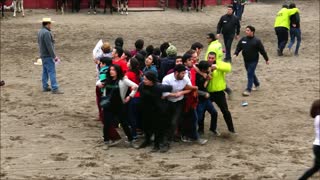Dangerous Bullfighting Events in Spain #29
Bullfighting, a traditional spectacle rooted in Spanish culture, has been a controversial and captivating event for centuries. Typically held in bullrings, these events showcase the skill of matadors, the bravery of the picadors and banderilleros, and the ferocity of the bulls. Despite its historical significance and cultural importance, bullfighting has become a topic of ethical debate due to concerns about animal welfare.
The bullfighting event, known as "corrida de toros" in Spanish, typically consists of several stages. The show begins with a grand procession, where the participants, including the matadors dressed in ornate costumes, make their entrance into the arena to the sound of traditional music. The atmosphere is filled with excitement and anticipation, as spectators eagerly await the confrontation between man and beast.
The bull is released into the arena, and the matador, armed with a cape and a sword, performs a series of elegant and daring maneuvers. These moves, known as "faenas," involve the matador enticing the bull to charge at him while gracefully dodging the animal's horns with swift movements. The goal is to display the matador's mastery and control over the powerful animal.
Throughout the spectacle, picadors, mounted on horses, thrust lances into the bull's back and neck muscles to weaken its strength. This is followed by the banderilleros, who place colorful barbed sticks called "banderillas" into the bull's shoulders, further enraging the animal.
As the bull becomes more fatigued and agitated, the matador prepares for the final act, the "estocada." In this crucial moment, the matador aims to deliver a precise and fatal sword thrust between the bull's shoulder blades, aiming for a swift and humane kill. If executed successfully, the bull falls to the ground, marking the end of the fight.
The fate of the bull, however, varies depending on the location and the specific bullfighting tradition. In some cases, the bull's meat may be sold for consumption, while in others, the animal's remains are taken away to be incinerated.
While bullfighting remains deeply ingrained in Spanish culture and is considered an art form by some, it has faced significant opposition from animal rights activists who argue that the practice is cruel and unnecessary. Several regions in Spain have already banned or restricted bullfighting events, reflecting the ongoing societal debate about its future.
In conclusion, bullfighting events in Spain are a storied tradition that has stirred both passion and controversy. It continues to be a prominent cultural expression in some regions, but its future remains uncertain due to evolving attitudes towards animal welfare and ethics.
-
 2:19
2:19
RT
1 year agoNaked animal rights activists protest bullfighting in Spain
3.55K33 -
 0:33
0:33
RT
5 months agoActivists lament as bullfighting returns to Mexico City
2.53K32 -
 0:54
0:54
RT
11 months agoMassive brawl erupts on Spain’s ‘Sin Street’ with chairs flying
3.68K15 -
 0:57
0:57
RT
1 year agoAnimal rights activists rally against San Isidro bullfighting
1.18K55 -
 0:30
0:30
emartb
10 months agoBilbao Festival Spain
514 -
 7:03
7:03
Chiletravel
5 years agoAnimal libre organization protest at Rodeo festival in Chile
7 -
 1:11
1:11
RT
11 months agoPamplona activists stage bullfight protest on eve of San Fermin festival
3.48K12 -
 0:59
0:59
RT
1 year agoFestive fisticuffs at Peruvian bare-knuckle fighting festival
1K15 -
 0:13
0:13
Wonderful moments in the animal kingdom
3 years agoBullfighting competition
291 -
 6:26
6:26
Rebel News
2 years ago $3.92 earned"It's bulls***": Calgarians react to mandatory vaccination requirement for sporting events
12.6K149